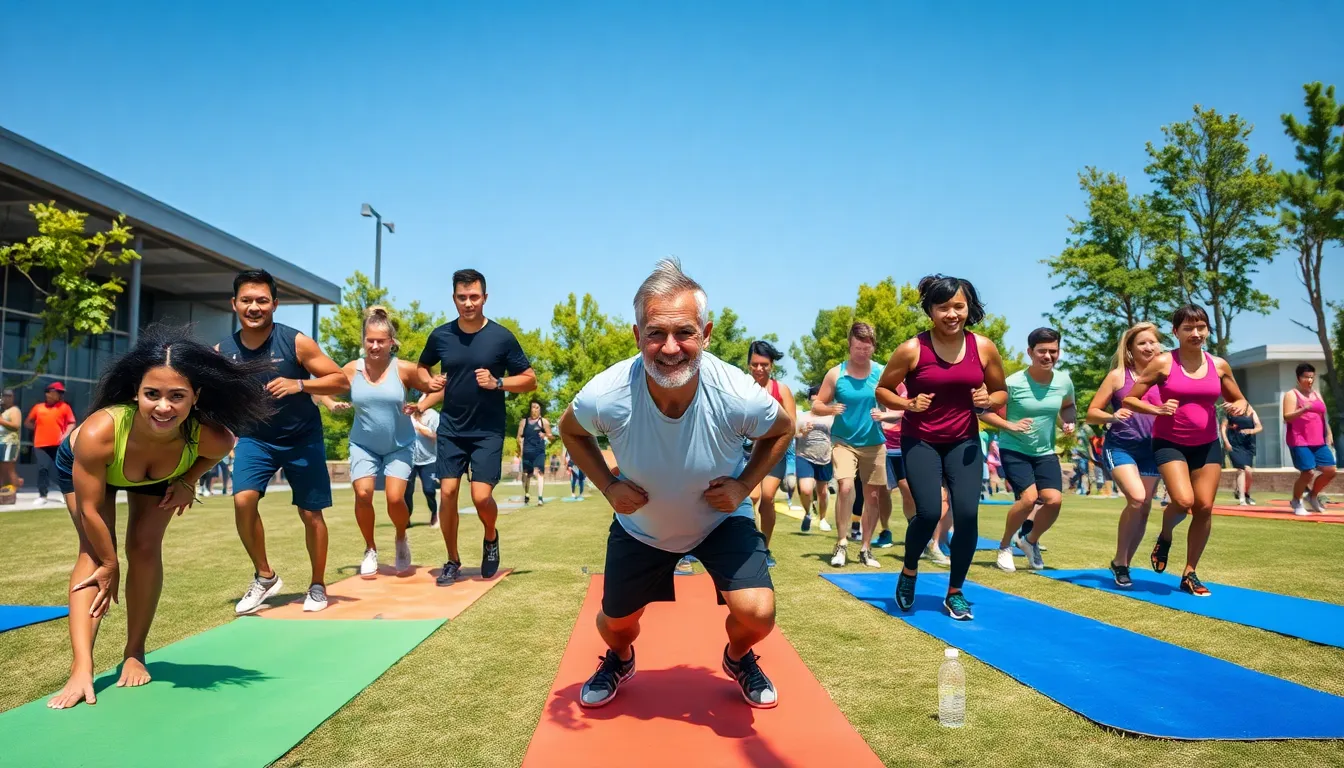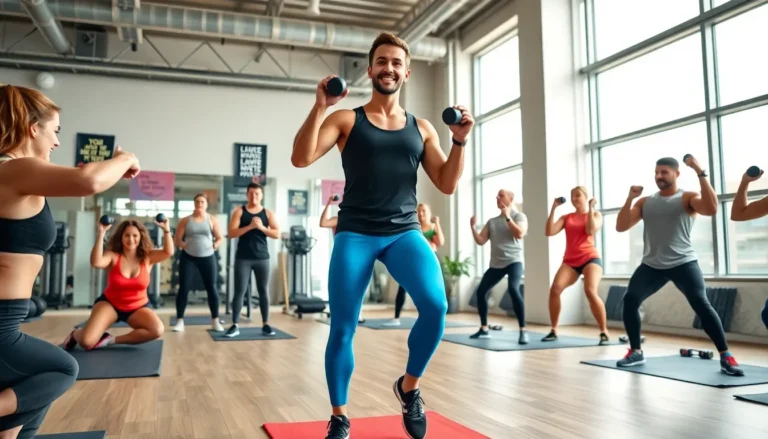When it comes to getting fit quickly, training camps often pop into mind. Picture this: a high-octane environment filled with people pushing each other to their limits, sweating alongside others who share the same goals. If that sounds like the kind of place you’d thrive, then keep reading. These camps don’t just promise results: they deliver, sometimes with a side of adventure. Little do folks know, these programs blend rigorous training with camaraderie, fueling both body and spirit. So, is it time to say goodbye to your usual workout routine and jump into the exhilarating world of training camp fitness?
Table of Contents
ToggleUnderstanding Training Camps and Their Purpose

Training camps serve as an intensive platform where individuals strive to improve their physical fitness, hone specific skills, or prepare for competitions. They generally provide a structured environment that encourages consistency, motivation, and accountability, which might be elusive in solo workout routines. Most training camps cater to various fitness levels, from beginners looking to jumpstart their health journey to elite athletes refining their craft.
Participants can expect a full spectrum of activities, such as strength training, endurance drills, and flexibility exercises. Eventually, the goal is to transform lives, whether that means shedding pounds, gaining muscle, or just having a blast while getting fit.
In simple terms, the purpose of these camps goes beyond achieving fitness milestones. They aim to cultivate a spirit of teamwork, resilience, and personal growth. When individuals push through their limits together, they often forge bonds that can last a lifetime.
Types of Training Camps
Training camps come in various flavors to cater to specific needs and preferences. Here’s a sneak peek into some popular types:
1. General Fitness Camps
These camps focus on overall health and fitness. They cater to participants at all levels, incorporating a blend of cardio, strength training, and flexibility workouts to ensure a balanced approach.
2. Sport-Specific Camps
For those passionate about a specific sport, these camps provide tailored training sessions designed to enhance performance in a particular area, be it soccer, basketball, or even martial arts.
3. Boot Camps
Boot camps are often high-intensity and combine military-style discipline with rigorous training. They aim to push participants out of their comfort zones, fostering strength and endurance.
4. Weight Loss Camps
These programs focus primarily on helping individuals shed excess weight through a combination of exercise, education, and nutritional guidance, promoting sustainable lifestyle changes.
5. Adventure Camps
Adventure camps mix fitness with outdoor exploration. Activities range from hiking to rock climbing, making fitness fun through nature while still incorporating workout routines.
Each camp type provides its unique blend of challenges and rewards, suitable for different fitness journeys.
The Importance of Fitness Training in Camps
Fitness training in camps is crucial for several reasons. First and foremost, it allows participants to experience intense workouts in a supportive environment. This camaraderie fosters motivation, helping individuals push beyond their limits.
Building endurance, strength, and flexibility requires consistent effort. Camps provide this in a concentrated way. Participants often find that being surrounded by others striving for the same goals is incredibly motivating, making it easier to stick to the training plans.
Also, camps introduce participants to diverse fitness methodologies. From HIIT to yoga, each session represents an opportunity to learn and grow. This exposure can spark interests in new workout styles, which can be beneficial long after the camp ends.
Core Components of a Successful Training Camp Fitness Program
A successful training camp fitness program integrates several core components. Here’s a breakdown:
1. Structured Workouts
Camps need well-structured workout plans that gradually increase in intensity. This prevents injuries while ensuring participants continually progress.
2. Skilled Instructors
Knowledgeable and motivating trainers play a significant role in guiding participants through workouts, offering support, and providing personalized feedback to foster improvement.
3. Nutrition Guidance
Nutrition is just as important as the workout itself. Camps often provide nutritional workshops to educate participants on balanced diets tailored for athletic performance.
4. Goal Setting
Establishing clear, reachable goals at the onset is essential. Written goals help participants track progress and maintain focus throughout the camp.
5. Recovery Strategies
Implementing recovery strategies is critical for long-term success. Adequate rest days and techniques like stretching and foam rolling can combact soreness and fatigue.
With these components, training camps maximize their effectiveness, enabling participants to derive the most benefit during their time there.
Nutrition Strategies for Optimal Performance
Nutrition plays a vital role in any training camp fitness program. Here’s how participants can fuel their bodies:
1. Prioritize Protein
Building muscle and recovering effectively requires protein. Incorporating lean meats, fish, dairy, and plant-based sources can significantly enhance performance.
2. Stay Hydrated
Water is essential, especially when engaging in intensive workouts. Staying hydrated prevents fatigue and optimizes physical functions during training sessions.
3. Healthy Carbohydrates
Carbohydrates provide the necessary energy to power through workouts. Whole grains, fruits, and vegetables should be staples to ensure adequate fuel.
4. Mindful Snacking
Selecting healthier snack options (like nuts and yogurt) can help maintain energy levels between workouts and prevent energy crashes.
5. Post-Workout Nutrition
Follow up workouts with a balanced meal. A combination of protein and carbs can help repair muscles and replenish glycogen stores, essential for recovery.
Enhancing Recovery: Rest and Rehabilitation
Recovery is often overlooked, but it’s a crucial part of any fitness program. Focusing on rest allows the body to heal and adapt. Here are some methods to enhance recovery:
1. Active Recovery
Gentle activities like walking or yoga can promote blood flow and assist in muscle recovery without causing additional strain.
2. Prioritize Sleep
Quality sleep is non-negotiable. It allows the body to repair itself and replenish energy levels, crucial for optimal performance during workouts.
3. Massage and Stretching
Incorporating regular massages and stretching routines helps to alleviate muscle tightness, improving flexibility and reducing soreness.
4. Hydration and Nutrition
Staying hydrated and eating well are not just pre-workout strategies but vital for recovery as well. Proper nutrition aids in muscle repair, keeping athletes in top shape.
5. Mindfulness and Relaxation
Practices like meditation or deep breathing can help reduce stress, contributing to overall recovery and well-being, allowing athletes to focus and perform better.


